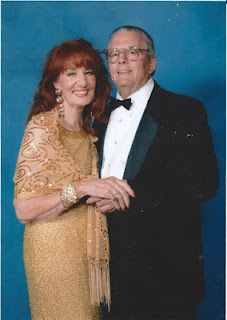
A cafeteria, sometimes called a canteen outside the U.S., is a type of food service location in which there is little or no waiting staff table service, whether a restaurant or within an institution such as a large office building or school; a school dining location is also referred to as a dining hall or lunchroom (in American English). Cafeterias are different from coffeehouses, although the English term came from the Spanish cafetería, same meaning.
Instead of table service, there are food-serving counters/stalls or booths, either in a line or allowing arbitrary walking paths.
Customers take the food that they desire as they walk along, placing it on a tray. In addition, there are often stations where customers order food, particularly items such as hamburgers or tacos which must be served hot and can be immediately prepared with little waiting. Alternatively, the patron is given a number and the item is brought to their table. For some food items and drinks, such as sodas, water, or the like, customers collect an empty container, pay at the check-out, and fill the container after the check-out. Free unlimited second servings are often allowed under this system. For legal purposes (and the consumption patterns of customers), this system is rarely, if at all, used for alcoholic drinks in the United States.
Customers are either charged a flat rate for admission (as in a buffet) or pay at the check-out for each item. Some self-service cafeterias charge by the weight of items on a patron's plate. In universities and colleges, some students pay for three meals a day by making a single large payment for the entire semester.
As cafeterias require few employees, they are often found within a larger institution, catering to the employees or clientele of that institution. For example, schools, colleges and their residence halls, department stores, hospitals, museums, places of worship, amusement parks, military bases, prisons, factories and office buildings often have cafeterias. Although some of such institutions self-operate their cafeterias, many outsource their cafeterias to a food service management company or lease space to independent businesses to operate food service facilities. The three largest food service management companies servicing institutions are Aramark, Compass Group, and Sodexo.
At one time, upscale cafeteria-style restaurants dominated the culture of the Southern United States, and to a lesser extent the Midwest. There were numerous prominent chains of them: Bickford's, Morrison's Cafeteria, Piccadilly Cafeteria, S&W Cafeteria, Apple House, Luby's, K&W, Britling, Wyatt's Cafeteria and Blue Boar among them. Currently, two Midwestern chains still exist, Sloppy Jo's Lunchroom and Manny's, which are both located in Illinois. There were also a number of smaller chains, usually located in and around a single city. These institutions, with the exception of K&W, went into a decline in the 1960s with the rise of fast food and were largely finished off in the 1980s by the rise of all-you-can-eat buffets and other casual dining establishments. A few chains—particularly Luby's and Piccadilly Cafeterias (which took over the Morrison's chain in 1998)—continue to fill some of the gap left by the decline of the older chains. Some of the smaller Midwestern chains, such as MCL Cafeterias centered on Indianapolis, are still in business.
Perhaps the first self-service restaurant (not necessarily a cafeteria) in the U.S. was the Exchange Buffet in New York City, opened September 4, 1885, which catered to an exclusively male clientele. Food was purchased at a counter and patrons ate standing up. This represents the predecessor of two formats: the cafeteria, described below and the automat.
During the 1893 World's Columbian Exposition in Chicago, entrepreneur John Kruger built an American version of the smörgåsbords he had seen while traveling in Sweden. Emphasising the simplicity and light fare, he called it the 'Cafeteria' - Spanish for 'coffee shop'. The exposition attracted over 27 million visitors (half the U.S. population at the time) in six months, and it was because of Kruger's operation that the United States first heard the term and experienced the self-service dining format.
A cafeteria in a U.S. military installation is known as a chow hall, a mess hall, a galley, mess decks or, more formally, a dining facility, often abbreviated to DFAC, whereas in common British Armed Forces parlance, it is known as a cookhouse or mess. Students in the United States often refer to cafeterias as lunchrooms, which also often serve school breakfast. Some school cafeterias in the U.S. and Canada have stages and movable seating that allow use as auditoriums. These rooms are known as cafetoriums or All Purpose Rooms. In some older facilities, a school's gymnasium is also often used as a cafeteria, with the kitchen facility being hidden behind a rolling partition outside non-meal hours. Newer rooms which also act as the school's grand entrance hall for crowd control and are used for multiple purposes, are often called the commons.
Your family will love how tender and flavorful this twist on a classic pork chop recipe tastes. Easy to serve to a crowd, our pork chop casserole with mushroom soup is sure to be one of your new favorite meals.
- 1/4 cup all-purpose flour
- 4 thick pork chops, rinsed and left damp
- 3 tablespoons vegetable oil
- 1 3/4 cups beef broth
- 1 (10-3/4-ounce) can condensed golden mushroom soup
- 1 (6-ounce) package long-grain and wild rice mix
- 1 cup water
- Preheat oven to 350º.
- Place flour in a shallow dish; add pork chops and turn to coat completely.
- In a large skillet over medium heat, heat oil. Brown pork chops 5 to 6 minutes per side.
- Meanwhile, combine remaining ingredients in a 9- x 13-inch baking dish; mix well. Place browned pork chops over mixture and cover with aluminum foil.
- Bake 1 hour, or until no pink remains in pork.
- Typically, Americans produce fruitcakes abundant in fruit and nuts
- In America, mail-order fruitcake began in 1913.
- Charities often sell commercial fruitcakes from catalogs as a fundraising event.
- In 1935, the expression “nutty as a fruitcake” was coined. The phrase came about as a result of excess nuts some Southern bakeries added to their fruitcakes due to their access to cheap nuts.
- Most mass-produced fruitcakes in America are alcohol-free.
- Some traditional recipes include liqueurs or brandy. Bakers then complete the fruitcake by covering it with powdered sugar.
- Some fruitcake makers soaked their fruitcakes in brandy-soak linens believing the cakes improve with age.












1 comment:
Thank you sweetie Sue for the birthday shout out! This morning a friend told me it was National Fruitcake Day. I asked him if he was trying to tell me something! :)
Hugs and love you!! XOXO Trisha
Post a Comment